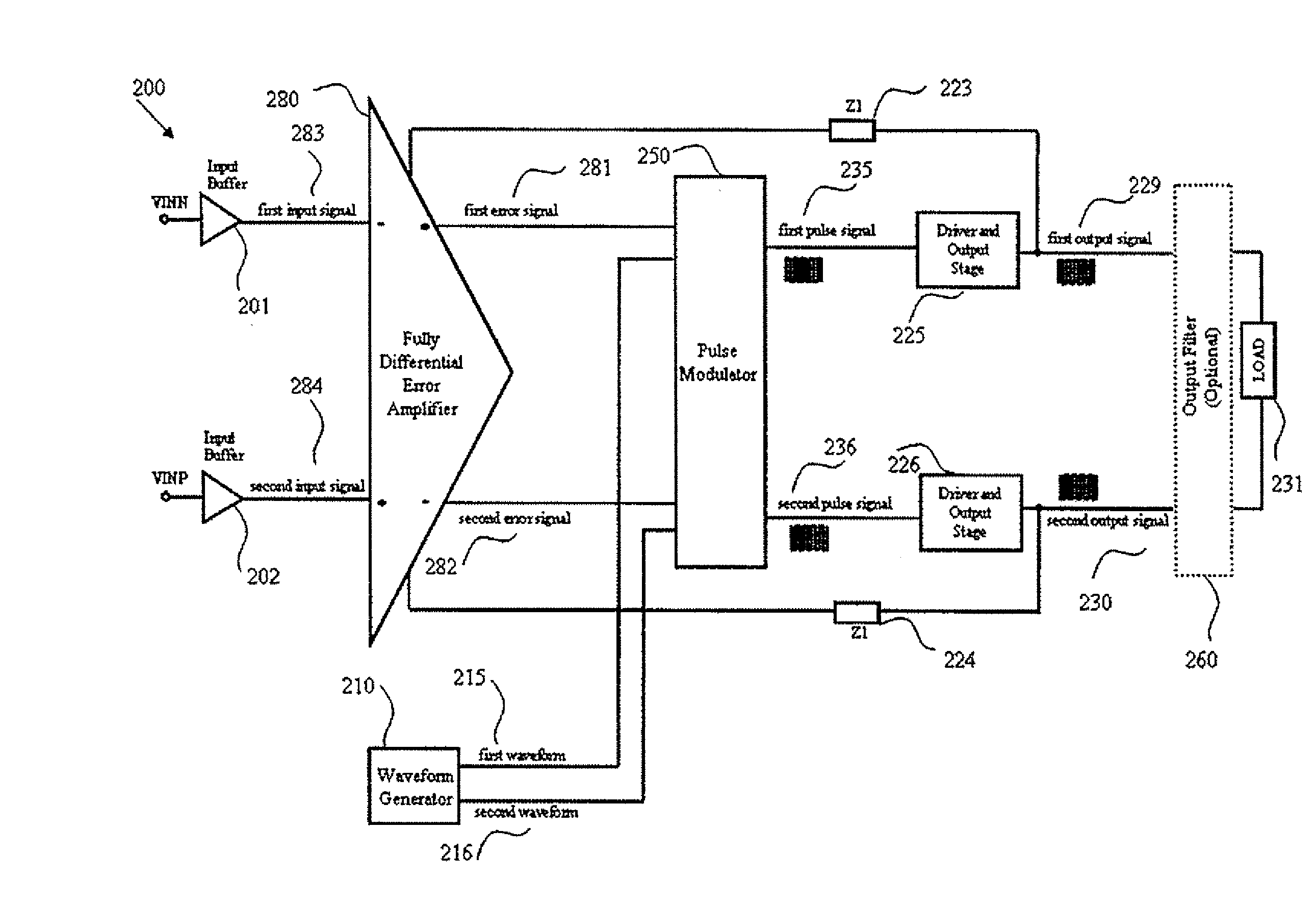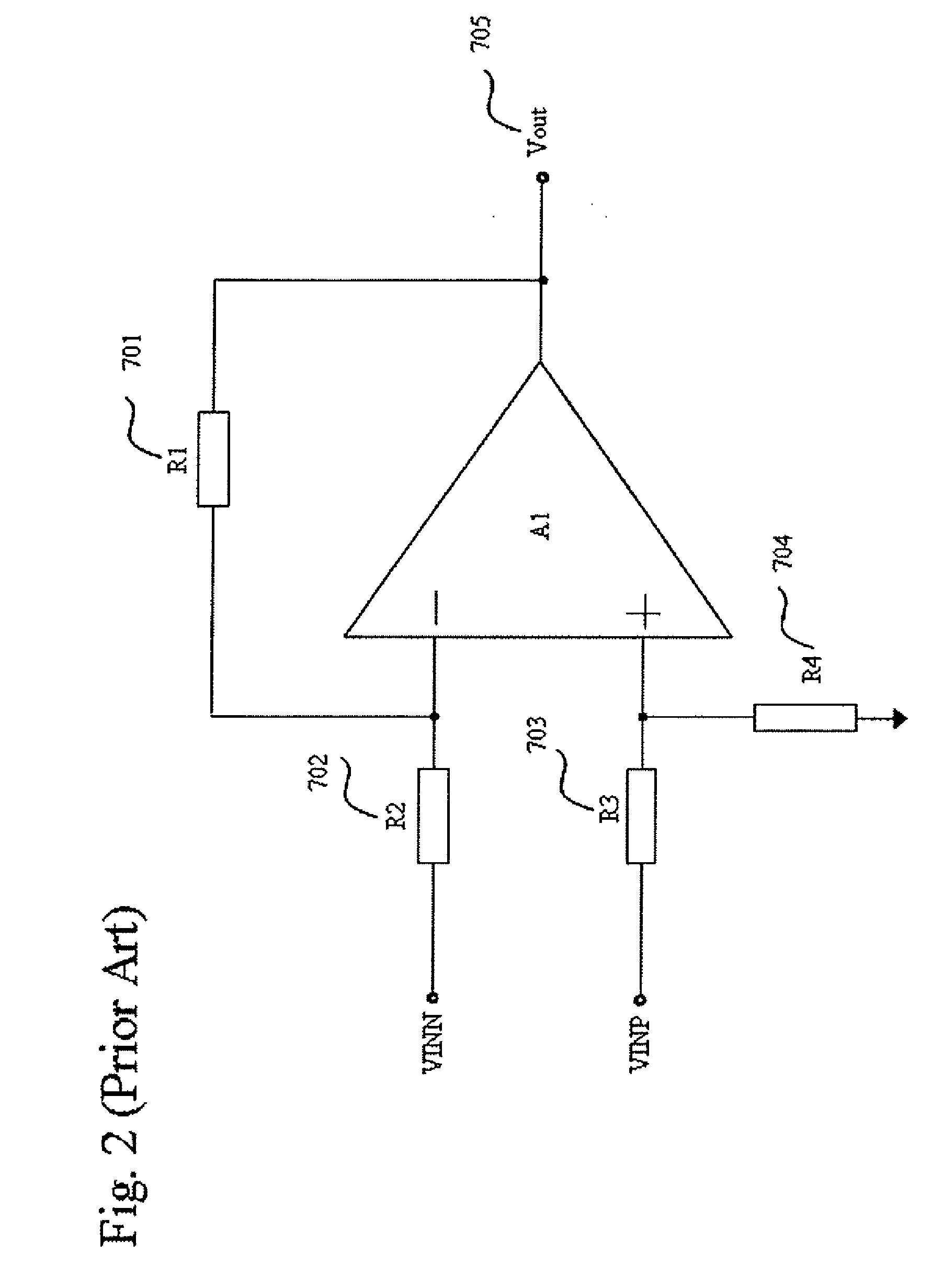Differential input class d amplifier
a technology of input class and amplifier, applied in the direction of amplifier, amplifier with semiconductor device/discharge tube, amplifier, etc., can solve the problems of power loss, power loss, and additional bulky heatsink attached to the power amplifier, and achieve superior performance and good system stability. the effect of performan
- Summary
- Abstract
- Description
- Claims
- Application Information
AI Technical Summary
Benefits of technology
Problems solved by technology
Method used
Image
Examples
first embodiment
[0041]The first embodiment of a fully differential error amplifier is shown in FIG. 5, which is common mode feedforward fully differential error amplifier 2801. Operational amplifier 296, 297 are included in common mode feedforward fully differential error amplifier 2801 to cater for negative differential input signal and positive differential input signal respectively. R1287 is placed between first input signal 283 and negative input terminal of operational amplifier 296. SW1291 and R1288 are connected in series. The other end of SW1291 is connected to first input signal 283. The other end of R1288 is connected to positive input terminal of operational amplifier 296. R2285 is connected between positive input terminal of operational amplifier 296 and a reference voltage, first bias voltage 603. Network Z2294 is connected between negative input terminal of operational amplifier 296 and output terminal of operational amplifier 295. R1289 is placed between second input signal 284 and p...
second embodiment
[0042]The second embodiment of a fully differential error amplifier is shown in FIG. 6, which is common mode feedback fully differential error amplifier 2802. Fully differential amplifier 2960 is included in common mode feedback fully differential error amplifier 2802 to cater for negative differential input signal and positive differential input signal respectively. R32870 is placed between first input signal 283 and positive input terminal of fully differential amplifier 2960. Network Z2294 is placed between negative input terminal of fully differential amplifier 2960 and output terminal of fully differential amplifier 2960. Network 72295 is placed between negative input terminal of fully differential amplifier 2960 and positive output terminal of fully differential amplifier 2960. Feedback network Z1223 is connected to negative input terminal of fully differential amplifier 2960. Feedback network Z1224 is connected to negative input terminal of fully differential amplifier 2960. ...
PUM
 Login to View More
Login to View More Abstract
Description
Claims
Application Information
 Login to View More
Login to View More - R&D
- Intellectual Property
- Life Sciences
- Materials
- Tech Scout
- Unparalleled Data Quality
- Higher Quality Content
- 60% Fewer Hallucinations
Browse by: Latest US Patents, China's latest patents, Technical Efficacy Thesaurus, Application Domain, Technology Topic, Popular Technical Reports.
© 2025 PatSnap. All rights reserved.Legal|Privacy policy|Modern Slavery Act Transparency Statement|Sitemap|About US| Contact US: help@patsnap.com



